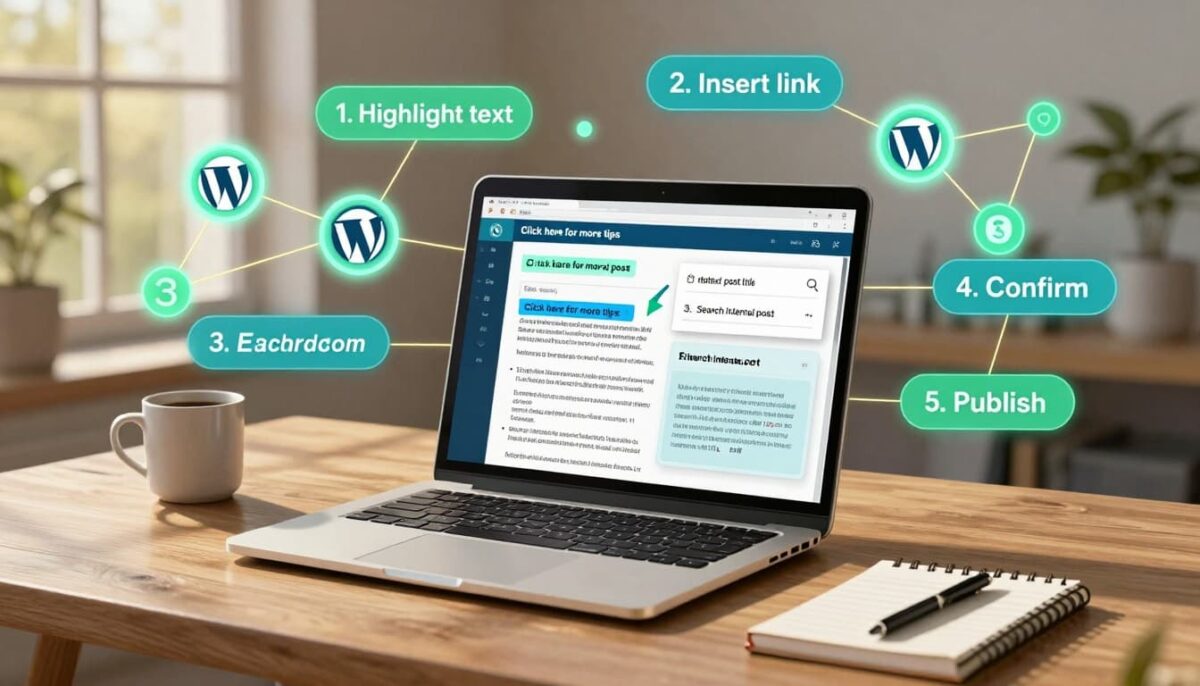If you’re searching for DIY SEO tips for small business or a blog, you’re in right place. Your website traffic is what determines how much you can make every month. But here’s the thing: not all traffic sources are equal.
When it comes to increasing your website traffic, search traffic is one of the highest converting traffic channels that can send you highly qualified visitors to your site.
Table of Contents
Do It Yourself Search Engine Optimization
So if you want to build a blog that makes money in the long run, you must find out ways to increase your “search traffic”. That being said, increasing search engine traffic is not so easy especially when you have a new website with less domain authority.
If you’re someone who’s struggling to get more traffic from search, this post is for you where you’ll discover a few of the most powerful ways to increase your search traffic.
Are you curious to find out? Let’s jump into the details without much ado for DIY SEO tips.

What Is DIY SEO?
DIY SEO is doing it yourself search engine optimization. It is a process to optimize a website so your site can be found better in the search engines.
SEO is about optimizing your content with keywords that are used when others search online for things you may be selling or to answer a question. It’s also about getting backlinks to your site as other sites “recommend” your site to their audience.
There are many factors involved but you can learn how to do it yourself. However, it does a lot of time and patience.
And once it works, it is never done as it can change overnight with a new Google update. (The latest one was in July of 2024.)
1. Find Out What Keywords People Are Searching For
The first step to SEO success is this: find out what keywords people are searching for.
Then, you can create content they actually want to read.
One of the biggest mistakes most bloggers make while creating content is that they either don’t bother doing keyword research or target broader search terms with huge competition.
If you’re also doing the same mistake, stop it right now. If you want to get better results with SEO, find those keywords which people are actually typing on Google to find information online.
How can you do that? How can you find what keywords people are actually looking for?
Long Tail Keyword Research.
Yes, long-tail keyword research is the KEY. Long-tail keywords usually have 4 or more words.
Examples of long-tail keywords are;
- “Best iPhone apps for fitness” is a 5-word long-tail keyword
- “How to quickly lose belly fat” is a 6-word long-tail keyword
- “Finance apps for London real estate agents” is a 7-word long tail keyword
As you can see above, all the above-mentioned long-tail keywords are very specific. In fact, they usually have low competition and you can rank higher when compared to broader terms like;
- iPhone apps
- Lose belly fat
- Finance apps
SEMrush (an excellent tool that we’ve been using for years to find highly profitable long-tail keyword ideas).
Are you getting it?
Long-tail keywords are great for increasing your search traffic no matter what industry you are in. Here are a few tools that can help you with long-tail keywords.
- Long Tail Pro
- SEMrush (an excellent tool that we’ve been using for years to find highly profitable long-tail keyword ideas)
- Ahrefs
- The Right Blogger SEO Tools
- LSI Graph
- Keywordtool.io
- Ubersuggest (another incredible free tool by Neil Patel which is way better than most free tools, though it is limited.)
Here are a few quick tips you can use to find really profitable yet low-competitive long-tail keywords.
2. Focus on the Search Volume for DIY SEO:
If you’re doing keyword research, make sure to find those keywords which have low monthly searches. If you’re a new site with less domain authority, I recommend you go for keywords with 500 or fewer monthly searches.
That way, it becomes easier for you to get first-page rankings by creating quality content. Make sure to use 2 to 3 keyword research tools to analyze the monthly searches of the keywords you target as most tools don’t provide accurate data.
Choose high CPC keywords: There’s no point in using low-volume keywords and increasing your traffic. You also need to pick those keywords which help you with sales.
Here’s where a keyword metric like CPC comes into play. High CPC (cost per click) keywords help you increase your overall conversion rates along with profits.
For example, if a keyword has a monthly search volume of 300 and gives a CPC of $10, you should definitely go for it instead of going for a keyword with 500 searches and a low CPC of $1. There are tools like SEMrush, Ahrefs, etc which provide you CPC information for every keyword you want to rank for.
Check out this awesome resource on simple SEO tutorials for newbies if you want to find a few solid tips around search engine optimization.
3. Stop Optimizing Your Blog Posts Like it’s 2009
I’ve been blogging for more than a decade. Back then, you could easily get first-page rankings by stuffing the same keywords again and again. Is it going to work now?
Definitely NO. Gone are the days when you can use black hat SEO practices like “keyword stuffing” to increase your content visibility for specific terms in search engines like Google.
Google can punish your site sooner or later if your website is filled mostly with “keyword-stuffed pages”.
So how to optimize your blog posts the right way? Here are a few PROVEN DIY SEO tips to optimize your content without sacrificing your content quality.
4. Target One Primary Keyword with Each Page and Use it Smartly:
Before publishing any blog post or page, make sure to come up with a primary keyword to target. So you can use that primary keyword in some of the prominent places on your posts to increase their organic visibility.
You can include your primary keyword in the following places for the best results.
- Title tag
- Meta description
- Image alt tags
- Subheadings such as h2, h3, h4, and so on
Add secondary keywords as well so your page can rank for multiple keywords and not just one.
5. DIY SEO Tips Need Your Title Tags
Your title tag and meta description play a key role in optimizing your content for search engines. So make sure to spend quality time writing engaging titles and meta descriptions for your content.
Use unique and compelling descriptions which should attract more clicks.
If you’re on WordPress, there’s an ultimate free optimization plugin called WordPress SEO by Yoast which you can use to optimize your content (both pages and posts) for your target keywords.
Yoast also suggests where to put your primary keyword to better optimize your content. So give it a try if you want to optimize your content naturally.
6. Find Relevant Secondary Keywords:
This is the most important thing if you want to avoid keyword stuffing and still optimize your content naturally for search engines like Google. Find all the relevant keywords (which are also known as LSI keywords) for your primary keywords.
That way you can start using those keywords within your content to optimize naturally for search results. You can use Google autosuggest or dedicated LSI keyword generation tools like LSI Graph to easily come up with dozens of LSI keyword phrases for your content.
However, don’t forget about local SEO for your business. If your business is local it can be a great way to boost your organic rankings.
7. DIY SEO Tips by Starting to Rank for Google Featured Snippets
Did you know that Google used to give more preference to featured snippets? That may be changing with the latest updates, so stay tuned.
Google featured snippets are “selected search results” that appear on top of Google’s search results. These are helpful for users to get direct answers to their questions. Some are even highlighted in blue.
According to Ahrefs, 12.29 percent of search queries have featured snippets in the search results. Only 30.9 percent of featured snippets rank at the very top placement in the organic results. 99.58 percent of the featured snippets are already in the top 10 positions in Google.
So, How to Start Ranking for Featured Snippets?
Know-How Featured Snippets Work:
There are basically 3 types of featured snippets that appear in Google searches.
- Paragraph snippets are showing up in 82% of featured snippets
- List snippets appeared in 10.8%
- Table snippets in 7.3%
If you want to get featured snippets with DIY SEO for paragraphs, use “question-based subheadings” and write the corresponding reply in the immediate paragraph.
Then, try to keep the paragraph length between 40 to 50 words (Approx 300 characters).
List Snippets
For list snippets, try to add 10 or more listicles to the post as they properly show up in Google search. Coming up to the Table related featured snippets, Google shows 3 columns and 9 rows in a featured snippet table.
That means, add 3 three columns to your table and 9 rows to your table in that case Google will add more rows of links that will point back to your original post.
8. DIY SEO Tips Include Come up with Questions to Answer
Make a list of all the important questions your target audience might type on Google. Then, create direct answers to the question in the introduction (or beneath your h2 tag).
9. Create Detailed Content for DIY SEO
Whether you know it or not, long-form of content with over 2000 words ranks really well in search engines. Not only that, long-form of content usually attracts more social shares, links, and comments, and why not?
Try to cover A to Z information about any topic you’re going to cover and spend quality time in research. That way you can add as many subheadings to make your content compelling and detailed.
10. Structure Your Content Nicely
Make sure your content is structured in a nice way using a hierarchy.
Here’s an example of a heading structure that is nicely structured:
H1: SEO is great
H2: Why is SEO great?
H3: You can get long-lasting traffic for free
H3: There are lots of ways to optimize your site
H2: How to conduct an SEO audit
H3: What is a site audit
H3: How to do it?
If you’re creating a long form of content, you can use the Table of contents plugin which can help you display the table of contents hierarchically (as mentioned above).
11. Backlinks Matter a Lot in DIY SEO Tips
When someone else links to your website, Google considers it as a positive signal and treats your content as “informative enough to show in the first page results”. That process is called a backlink.
If there’s too much competition for topics you want to get into the first page results, you definitely need more than 1 backlink though!

3 Types of Backlinks for DIY SEO
There are generally 3 types of backlinks and all of them are equally important (external links matter even more especially when they are coming from high-domain authority sites).
- Internal links (links that you use to link to your own blog posts)
- External links (links coming from other sites)
- Outbound links (whatever links going from your site such as affiliate links, linking to other bloggers’ posts, social media profile links, etc)
The great thing about building backlinks is that you can build traffic-generating niche sites too. For instance, we recently launched Hosting Monks which covers hosting-related deals.
12. DIY SEO Tips for High-Quality Links Count
If you want to increase your site’s search traffic, start attracting high-quality links from other sources. You can use the following ways to build links.
- Guest posting on other sites
- Blogger outreach (reaching out to other bloggers to share and link to your stuff)
- Participating in weekly roundups (there are blogs that do weekly roundups where they include the best content)
- Broken link building
- Using Quora (although they are no-follow links they are equally good especially when they are coming from a great platform like Quora where engagement is more)
- Skyscraper technique (which was introduced by SEO expert Brian Dean from Backlinko where you find popular content in your niche, create 10x content around that topic, and promote it to the right people to get more shares and backlinks)
13. AI’s Role in SEO with User Intent and More
AI plays a growing role in DIY SEO by simplifying complex tasks and saving time. It helps you research keywords faster, analyze competitors more efficiently, and even identify technical issues on your site.
Tools powered by AI can generate content suggestions based on search trends or optimize existing pages for better rankings. Many also offer real-time insights, helping you spot opportunities or issues without downloading a ton of data.
Plus, with natural language processing, AI can suggest tweaks in your writing to match user intent.
Think of it as having a virtual assistant that speeds up SEO processes and reduces guesswork, so you can focus on what matters—getting results.
Final Thoughts: Increasing Your Search Traffic Quickly with DIY SEO Tips
Search traffic is the lifeblood of any profitable website that generates a ton of traffic from searches. But increasing your search traffic takes a lot of time. Therefore, by using the RIGHT SEO strategies, you can definitely bring more visitors from search engines like Google.
Doing your SEO means that you will need to follow all the updates from Google, the other big search engines and AI searches happening in 2025 and beyond.
- 13 DIY SEO Tips to Skyrocket Your WebSite Traffic - March 22, 2025
- 5 Essential Ways To Increase Your Website Sales - July 22, 2024
- 5 SEO Common Mistakes People Make (How To Avoid Them) - June 28, 2024





Hi Anil,
Thank you so much for this article.
I had no idea that, in order for a post to be featured as Google snippet you had to actually structure your blog post in a certain way.
I am going to give it a go and see if I can get at list a post to be featured.
My blog is quite new (December 2018), so I am still at the stage where I have no traffic and I feel like giving up sometimes, so thank you for these tips!
Cristina
Hi Anil & Lisa,
It is a good thing that you emphasize the need to go for low monthly search keywords or low volume keywords. I have experimented with it a lot and found that it works amazing great. In fact, tools like Ubersuggest will tell you how your might rank depending on the keyword you are targeting.
What is also vital is that you don’t have to use any low volume keywords, but you have to take into consideration the cpc of the said keyword. I’m glad that you mentioned that as well. Good job!
Hi Moss,
Yes, if you really want to increase your search traffic, focus on finding low volume long tail keywords. There’s no point in going for highly competitive keywords especially when you’ve a new site or when you’ve a site with less authority.
Don’t chase “tougher” keywords. Go for easier to rank for keywords, start bringing visitors to your site from search and you’ll have enough motivation to work harder in the long run.
Thanks for the comment!
This is an interesting article to read on seo tips. I have found great content here plus I like your blogging style. Great Job . Your article in very informative and useful.
So Thank you so much for posting this article.
Keep Blogging !!
Hi Roslia,
Glad you liked it and thanks so much for stopping by. If you’ve any questions around the post, please let me know!
Those backlinks count heaps Anil. I do little SEO stuff but still see some search traffic because I write practical, helpful posts and I have a crazy number of backlinks, some from high authority sites. Do your job well and oodles of top bloggers link to you. Neil Patel is the master of this.
Hey Ryan,
Glad to see you here. Yes, backlinks play a key role. It doesn’t matter what niche you are in, you need more links to be able to get into first page rankings for the keywords you target.
Neil Patel is definitely one of the best experts who is good at link building and that’s why he gets milllions of views every year.
Hi Anil,
Glad to see you on Lisa’s page.
Thanks for sharing this well brought out a post on SEO.
Yes, the tips given in the post are worth notable, of course, some of them I am following very diligently and getting a lot of benefits too.
I fully agree with you that, linking to high-quality pages are an important factor to look into for better traffic and related benefits. But this thing should be done in a natural way.Thanks Lisa for this share of Anil.
Keep sharing.
Have a great week ahead to both of you.
Best
~ Phil
Hi Philip,
Glad to see your comment on my guest post. Yes, linking to high quality posts (including others posts) can be relevant both to your visitors who are reading your content and also for search engines.
Just make sure to email others whenever you’re linking out to them. That’s how you can build relationships and get benefits in return in the long run.
Thanks for stopping by!
Hi Anil,
Good to see you here and thanks for the call to pay attention to SEO when writing. I fully endorse these points because natural traffic is what turns our online businesses around.
What I’m experimenting these days is semantic SEO. I think this is a level of LSI keywording. I was working on a Pinterest article and the tool I used proposed the words Shopify and Etsy. Looks weird but these are Pinterest related terms.
Thank you for bringing Anil on board Lisa. The success of his blog is clear proof that he knows his onions.
Happy week to both of you.
Hi Enstine,
Glad to see you around here buddy. Yes, it’s so true that we need to pay close attention to SEO while creating contents. If you really want more search traffic, you need to do keyword research and optimize your content for certain keywords.
LSI keywords are something which help you with more search traffic without doing crazy things like keyword stuffing.
Glad you found it useful and thanks for stopping by!